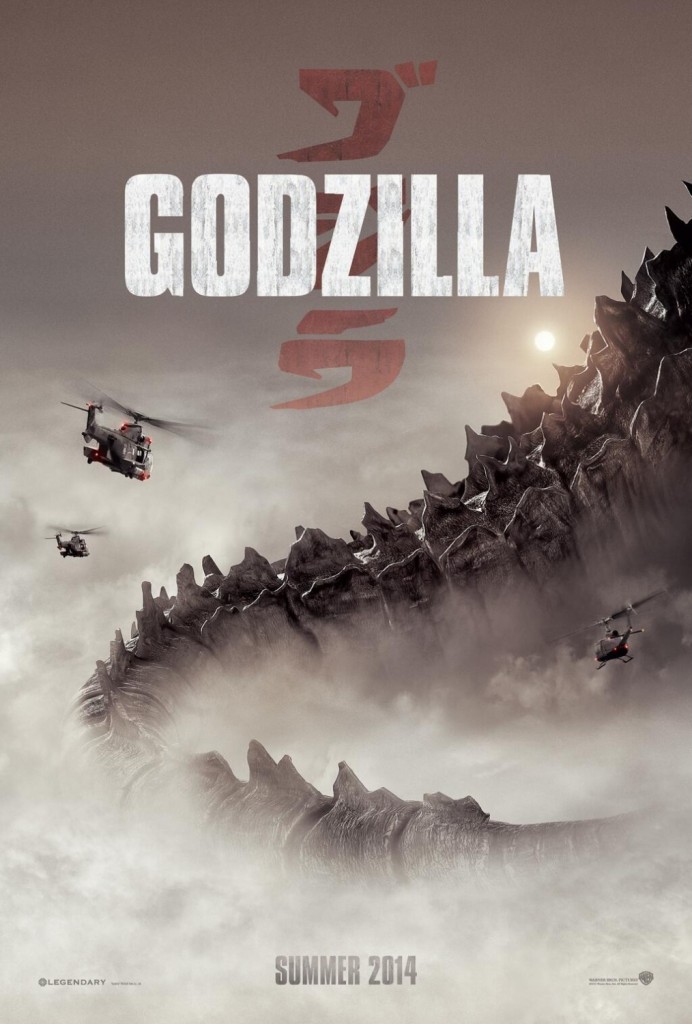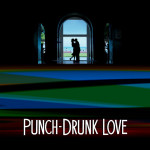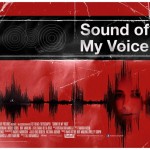After a worldwide decade-long hiatus, the most bad ass 60-year old on the planet has reemerged to assert his dominance as the King of All Monsters, here to wipe out bad memories of horrible 1990’s CG-lizards, Matthew Broderick, and decades of men in cheap rubber suits stumbling through cities made of cardboard. Building on the terror of the 1954 original, “Godzilla” is a movie devoid of camp and silliness, an A-movie treatment to a B-movie concept, and it all works great.
The movie starts with a fun opening credit sequence showing old-timey footage from the 1950’s of some A-bomb tests that were actually attempts to kill Godzilla back in the day. And after this sequence, we don’t see Godzilla again until about halfway through the movie, as we get a nice, slow build to the reveal of the giant monster in his full glory. But don’t worry, that doesn’t mean nothing happens for the first half of the movie; on the contrary, we get to see the awe-inspiring and fear-inducing destruction caused by a pair of giant monsters that the military dubs “MUTOs” (standing for Massive Unknown Terrestrial Organism), and this is pretty smart by the the filmmakers, because instead of just breaking out some old monsters, they came up with their own designs for new ones, and found a way to have their characters come up with a name for these monsters that simultaneously sounds like a name of a monster from the old Toho movies but also sounds like a very plausible acronym that could actually be used by the military in a situation like this.
So these MUTOs have awakened, they are going around the world in an effort to reproduce, and the pesky humans are trying to figure out how to stop them. And of course there is a secret organization known as Project Monarch, led by one fella (Ken Watanabe), and they know about ANOTHER monster entirely, one that lives deep in the ocean, and only he knows (or at least suspects) that this monster, awakened since at least the 1950s, is actually there to maintain balance in the world; which means that once the MUTOs come out to do their thing, this one monster, this KING of the monsters, will come out to put a stop to them.
The problem with this? When this monster, known as (what else) Godzilla, comes out of the water and goes looking for the MUTOs, he kind of causes his own fair share of destruction and chaos along the way, and of course the puny little humans down on the street, they don’t see the good monster battling the bad ones, they just see THREE monsters, all of them causing death wherever they go. So when the US Navy starts to engage, they are trying to figure out how to destroy of all the monsters.
But that’s not the only thing this story is about, as there has to be a human element as well to make this thing resonate even a little bit, otherwise all we got is giant monsters and nothing else. So the movie starts with an American scientist in Japan named Joe Brody (Bryan Cranston) and he is trying to get the nuclear plant he works in shut down because of a series of seismic tremors threatening to cause a breach, which would lead to a radiation leak, which would lead to catastrophe. Of course this a movie so catastrophe does indeed strike, which also manages to do severe damage to Brody’s family as well as Japan.
And 15 years later, Joe Brody has withdrawn from society, being seen as a conspiracy theory nut because he thinks, no, he KNOWS, that the disaster at the plant was created by something not easily explained and that a massive cover up is keeping the truth from getting out. And his son Ford (Aaron Taylor-Johnson) reluctantly gets involved, at first to try to get his dad out of this whole ordeal and back to the world, but then soon he understands the real implications, the TRUTH of the situation, and then the rest of the movie is Ford trying to get home from Japan to his wife and kid back in San Francisco, while the whole time the monsters head for the same area. Which is both convenient and inconvenient for Ford at the same time.
So what happens early in the movie to this family carries over with Ford, as he then spends the rest of the movie trying to reconnect with his family, and really this part of the story is done JUST well enough that it does not sink the rest of the story, and actually does maintain that element of human emotion that would be needed to keep a movie like this grounded enough that it doesn’t just become a bunch of soulless spectacle. Instead, despite this being yet another PG-13 movie featuring scores of unseen and bloodless deaths, for once a blockbuster like this gets across the idea of death as a very real thing. People die in this movie and it is FELT, there are massive amounts of deaths in one fell swoop and there are close up, personal, emotional deaths, and this stands in STARK contrast to all of these other big budget PG-13 summer movies featuring destruction that surely results in huge body counts, but with these body counts and deaths going completely unnoticed and ignored. Not in “Godzilla.” The fate of humanity is surely on the line.
Also, this feels like the rare movie these days that manages to liberally borrow from the real-life imagery of the September 11, 2001 attack on the World Trade Center and the hugely destructive tsunamis and the Japanese Fukushima nuclear plant disaster without CHEAPENING these images or exploiting them. Instead this is like the original 1954 “Gojira,” which was born directly from the bombings of Hiroshima and Nagasake during World War II, as the radioactive monster known as Godzilla was a direct allegory to the bomb and images and scenes from Japan in the direct aftermath of the bombings was used as inspiration in that film. This “Godzilla” movie, like the original, is very much about mankind’s hubris directly resulting in the destruction of our own world and ourselves, while nature fights against us in order to restore the balance. These movies and stories come from our own experiences as people and as a world, it’s not just a bunch of bullshit, so yes while this is a movie about giant monsters doing battle, it comes from something very serious and heavy and real, which gives it all a sense of vitality.
And then making this movie REALLY pop is the way the whole thing is shot and presented; there are MULTIPLE shots of people on the ground level looking up in a mixture of fear and awe, and many disaster shots and effects sequences are seen from a person’s POV out in the distance, watching from what is actually a safe distance, allowing that person to stay still and witness the destruction, and that then extends out to the actual shot itself. Suffice to say, “Godzilla” is devoid of the quick editing and shaky camera work that has come to embody action and kinetic energy in our films these days. When Godzilla does battle with the MUTOs, or even when we watch these giant behemoths move around and stomp through cities and the countryside, they are presented in steady wide shots so we can see everything that happens, which is great because there are a lot of awesome things happening and apparently someone told Gareth Edwards that if he kept his camera movements still and concise and just let the actual on screen action speak for itself that it would all work great. Which it does.
“Godzilla” is pretty damn great, the best kind of summer blockbuster, one that doesn’t have to come with any “turn your brain off” qualifiers, one that doesn’t rush or feel compelled to be 100% spectacle, a movie that delivers emotion as well as thrills, a movie that people are sure to enjoy for years to come. Godzilla is back and he’s better than ever.


 #94 – Halloweenie Roastidiso
#94 – Halloweenie Roastidiso Netflix pick for 1/27/15 – ‘Punch-Drunk Love’
Netflix pick for 1/27/15 – ‘Punch-Drunk Love’ Review: ‘Sound of My Voice’
Review: ‘Sound of My Voice’ Review: ‘War Dogs’
Review: ‘War Dogs’
Leave a Reply
You must be logged in to post a comment.